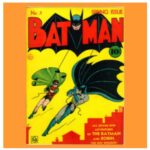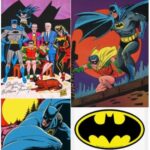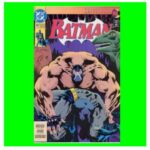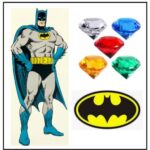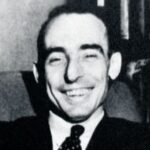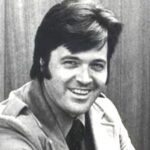Clicking on the following links or images will take you to the different Batman comic collections covered in this section:
Since his debut in the late thirties, Batman has become one of the most iconic characters in comics as well as other forms of media. His tenure spanning nine decades can be broadly divided into four eras:
- Golden Age (1939 to 1953)
- Silver Age
- Part 1 (1954 to mid-1964)
- Part 2: ‘New Look’ (mid-1964 to late 1969)
- Bronze Age (late 1969 to late 1986)
- Modern Age (late 1986 to present)
The exact years covered by these eras may vary slightly depending on the source, but most comic-book experts agree on the following milestones/transition points in Batman’s comic-book career:
The Golden Age of Batman began with his creation by Bob Kane and Bill Finger and his introduction to the world in the landmark Detective Comics #27. Batman was a big hit from day one, and over the next few decades he continued to gain popularity, becoming an instantly recognizable icon and one of the most widely known fictional characters ever created. Over the next two decades after his debut, the Batman legend grew with the fleshing out of his origin story and the introduction of his junior partner Robin. Other milestones during this period included the introduction of many memorable villains including the Joker, Catwoman, Penguin, Two-Face, Scarecrow, Clayface and the Riddler.
In many ways, the development of Batman in his early days paralleled that of Superman. Each character was created by two young men, one skilled in writing and the other in art. The two writers (Jerry Siegel and Bill Finger) were tremendously talented and they had long, productive careers extending well into the 1960s. Both Siegel and Finger are generally recognized as being among the finest comic-book writers of their generation, and both produced excellent stories about their creations for about three decades after their respective character’s debut. Other writers who wrote Batman stories during the Golden Age included Gardner Fox, Don Cameron, Alvin Schwartz and David Vern, as well as the incomparable Edmond Hamilton (who also scripted many amazing Superman and Superman-Batman stories during the Silver Age).
While Bob Kane was a good artist, he was not exceptional, though he had a strong visual sense. Thus, he soon started an art studio and delegated the actual drawing of Batman stories to other artists, while claiming the art as his own. The studio artists included Jerry Robinson, Sheldon Moldoff, Dick Sprang, Charles Paris Lew Sayre Schwartz and Win Mortimer. Of all these artists, Sheldon Moldoff had the longest tenure and the highest productivity as Batman’s illustrator, working as Bob Kane’s ghost artist for nearly three decades. Because Bob Kane signed all the Batman stories during this period with his ubiquitous boxed signature, Sheldon Moldoff and others received virtually no credit for their contributions (though this has been retroactively corrected: their work has been properly credited in the Grand Comics Database and on this website as well).
Unlike the case of Superman and most other DC super-heroes (for whom there was a clear point in time when their respective Silver-Age periods started), there is no consensus as to exactly when Batman’s Silver Age began. Based on my careful (albeit subjective) assessment, I have chosen 1954 as the starting point of Part 1 of the Silver Age, because that’s when the Batman mythology started to take shape, as explained below.
At the beginning of 1954, two iconic Batman villains Two-Face and Catwoman were re-introduced in new incarnations which have endured until the present day. Next, following the trend of what was happening on Superman comic books, the Batman family began to expand with the addition of more wholesome and family-friendly characters such as Bat-Hound, Batwoman, Bat-Girl and even quaint characters like Bat-Mite (presumably to match Superman’s Mr. Mxyzptlk). The continuing reassuring presence of Alfred the butler and Commissioner Gordon rounded out the Batman family. The other thing that happened in 1954 was the first team-up of Batman with Superman in World’s Finest Comics, which became a regular feature from that point on. This inevitably led to the pairing of Superman and Batman villains such as Luthor with the Joker.
Unfortunately, starting in the late 1950s and continuing into the early 1960s, some fantastic elements of Superman stories began to creep into Batman comic books. These included strange bodily transformations, visitations from space aliens (and regular visits to other planets), and all kinds of bizarre monsters showing up with barely any explanation. These story lines were totally incongruous to Batman’s image as a detective and crimefighter and, needless to say, the reading public was not impressed and Batman’s popularity plummeted. This led to the Batman comic books being on the verge of being cancelled, which triggered a Batman reboot by newly assigned editor Julius Schwartz and began Batman’s Silver Age Part 2 (the ‘New Look’).
Julius Schwartz teamed up with artist Carmine Infantino and made many dramatic changes to rescue Batman from the risk of oblivion. The two jettisoned not only the monsters, space aliens and strange transformations that had become common with Batman, but also all the other silly elements like Batwoman, Bat-Hound and Bat-Mite. They brought Batman back to his roots as a dark, brooding crimefighter and changed his look by adding a yellow oval over his Bat-emblem on his chest and making his appearance more streamlined. Last but not least, a new writing team was assembled for Batman’s rebooting effort: John Broome, Ed (France) Herron, Gardner Fox, and the old reliable Bill Finger.
Along with Carmine Infantino (who drew most of the covers), the predominant artist for the Batman stories during much of this period continued to be the unflagging Sheldon Moldoff doing yeoman ghost-artwork for Bob Kane. Towards the end of this period, the artwork on Batman comics was taken over by Irv Novick and Bob Brown. All four artists (Infantino, Moldoff, Novick and Brown) were ably supported by inker Joe Giella.
Batman comics have always been notable for memorable villains, and this period was no exception. While some villains were carried over from previous periods (such as Batman’s longtime foes the Joker and the Penguin), several others were introduced (or reinvented) during this period, including Poison Ivy, the Blockbuster, the Outsider, the Scarecrow, the Riddler and Mr. Freeze. Most of these villains are still part of the Batman mythos even today.
In the mid-1960s, there was a huge jump in Batman’s popularity because of the launch of the Batman TV show, which quickly caught fire with the American public. The TV show showcased many prominent villains from the comic books such as the Joker, Penguin, Riddler and Catwoman, who often stole the spotlight from the main characters Batman and Robin. One character who made her debut on TV but was later introduced in the Batman comics was Batgirl, an incognito crimefighter who was secretly Barbara, the daughter of Commissioner Gordon. An interesting side effect of Batman’s rise in prominence in the mid 1960s was that the Brave and the Bold comics which had previously featured rotating pairs of DC super-heroes became an exclusive showcase for Batman, who was paired with a variety of DC characters (not all of whom were super-heroes).
Partly because of the Batman TV show’s cancellation after three seasons, Batman’s popularity had begun to flag again in the late 1960s, and once more Julius Schwartz came to the rescue. His second rebooting effort marked the beginning of Batman’s Bronze Age. For this purpose, he recruited the up-and-coming artist Neal Adams to help change Batman’s look yet again and he also roped in another whiz kid at DC to work with Adams: writer Denny O’Neil. The first Adams-O’Neil collaboration, Detective #395, forever changed the tone of Batman stories and also gave Batman the modern version of the dark, brooding look with which we are all familiar. Together, Adams and O’Neil produced some of the most striking Batman stories ever written and they set the stage for Batman’s permanent return to being a creature of the night and his transformation into the Dark Knight.
The Bronze Age also ushered in one of the most memorable and enduring Batman villains: Ra’s Al Ghul (and his daughter Talia). Most of the Silver-Age villains other than the Joker, Penguin, Catwoman and Two-Face were sidelined. Other notable milestones of Batman’s Bronze Age include: the three-issue storyline Untold Legend of the Batman, the appearance of the second Robin (Jason Todd), and the breakup of the Batman-Superman team in the final issue (#232) of World’s Finest Comics. The Bronze Age came to a close in 1986, with the revamp of the entire universe of DC Comics superheroes with the 1985-1986 crossover series Crisis on Infinite Earths.
By late 1986, Batman was ready for another reboot. The two key players involved in this next reinvention of Batman were writer/artist Frank Miller and Denny O’Neil, the latter newly returned to DC (this time as editor) after a stint at Marvel. The Modern-Age rebooting of Batman started with the landmark 4-issue comic-book series The Dark Knight Returns. The series is widely considered to be one of the greatest and most influential Batman stories ever, as well as one of the greatest works of comic art in general.
The following year 1987 saw the arrival of two other Frank Miller series: Batman: Year One and Batman: Year Two, comprising a creative and exhilarating retelling of Batman’s origin Unlike The Dark Knight Returns, which had been scripted and drawn by Frank Miller, this time Miller collaborated with two amazing artists: David Mazzucchelli and Todd McFarlane respectively. Both of these series were instant successes and set the stage for the Batman mythos in the Modern Age. Another milestone in 1987 was the publication of DC’s first ever graphic novel: Batman: Son of the Demon, an amazing story by Mike W. Barr featuring Ra’s Al Ghul and an intricate plot involving Batman’s stormy romance with his daughter Talia.
As the Modern Age progressed, DC’s super-heroes, particularly Batman, became darker and more psychologically complex. Comic-book creators became better-known and more influential in the industry, and independent comics flourished and became the primary mode of distribution for comic books. As was the case with Superman, the 1986 reboot of Batman did not stick, and the character has been reinvented multiple times over the years; these reinventions have not always been consistent. Thus, DC did another reboot in a 2011 with the Flashpoint crossover series and relaunched all of its super-hero characters in the ‘New 52′ comic books. Since then, there have been even more reboots of the DC universe, but I have lost interest in following these and stopped keeping track.
Some notable Batman storylines which took place during the Modern Age were: the groundbreaking Knightfall/Knightquest/KnightsEnd saga (one of the longest story cycles in comic books ever), A Death in the Family (end of the second Robin Jason Todd), A Lonely Place of Dying (debut of third Robin Tim Drake), Batman: The Long Halloween, Batman: Hush, and Batman: Earth One.
Over the years, starting in the Silver Age and continuing through the Bronze Age and into the Modern Age, many giants and special issues were published. They started with 80-page Annuals and Giants, which reprinted many fan-favorite stories from the past. These later transitioned into 64-page Giants. Eventually, there were 64-page Annuals that featured original stories, as well as several special issues. The Modern Age saw the arrival of ‘trade paperbacks’ which collect recent comics that were published as part of a series; there are also referred to as ‘graphic novels’, and sometimes they are published directly rather than first appearing in individual comics.
There have been some amazing writers and artists that produced Batman stories through the various eras. I have some personal favorites among these, so I have created separate subsections collecting their respective works: writers Bill Finger and Edmond Hamilton and artists Carmine Infantino and Neal Adams.
For more information on the various Ages of Batman comics, please see this link.

